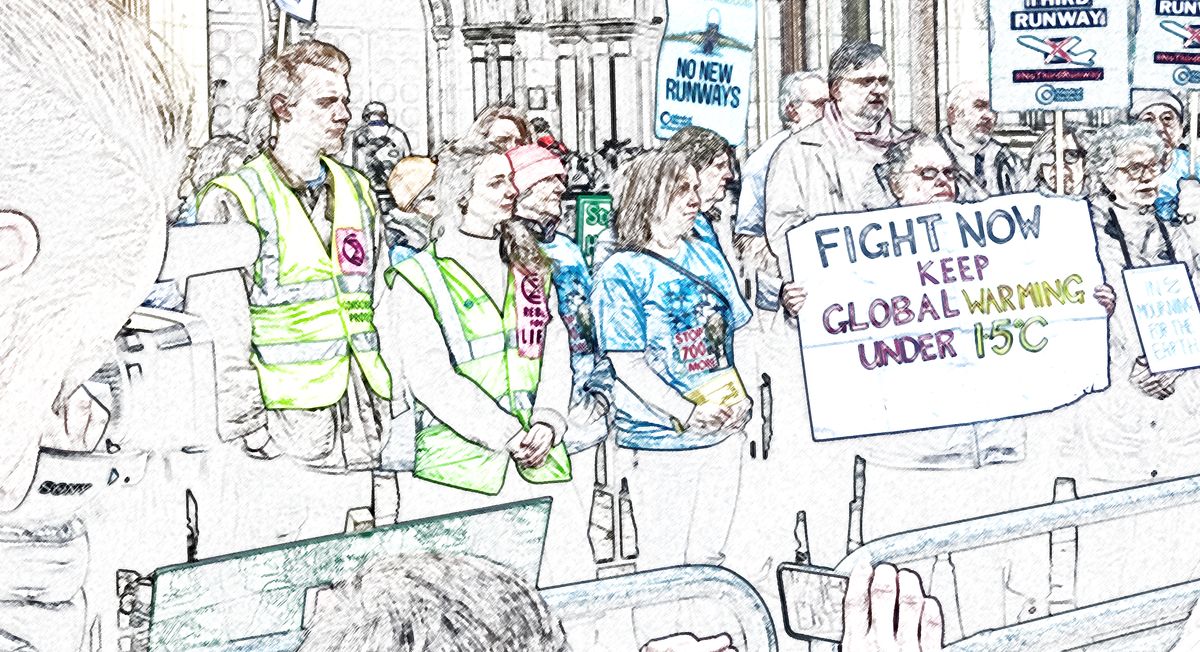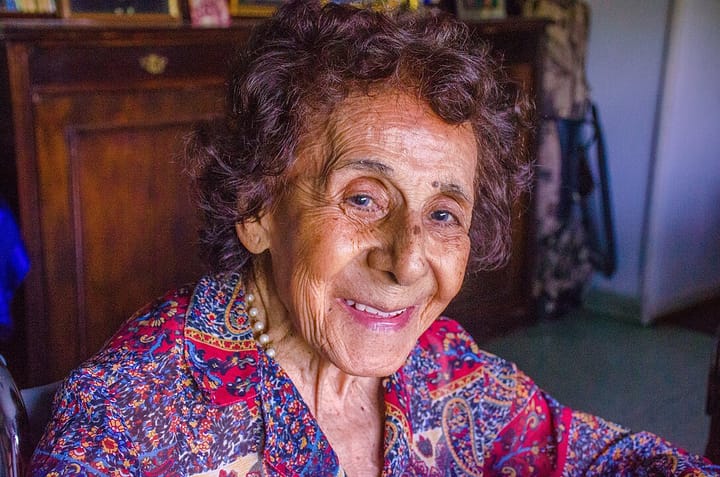Why is climate litigation so sexy?

Hundreds of lawsuits have been brought to try to force states and companies to act on climate change. Why is this tactic so appealing and why has it sparked the imagination of campaigners and the public?
I first became interested in climate litigation nearly a decade ago. I had been reporting on environmental law for the UK journal The ENDS Report for several years when people began talking seriously about using the courts to tackle the climate crisis.
Although the idea had been considered academically for decades, and the first few tentative cases brought in the 1980s, a tiny ripple of genuine excitement now ran through the climate community.
But my research into an article in 2013 hit a brick wall. Real action is a long way off, was the standard response. One experienced but dejected-sounding lawyer told me to call again in 50 years’ time.
Three years later everything had changed. The story I wrote then reflected the huge political shift that had taken place, the way in which new options for using the law had been considered and tested, and legal precedents set, and how the hopes of people trying to pursue climate justice through the law had been reset.
Features on how climate litigation could save the world followed in the New York Times, Guardian, Deutsche Welle and El Pais. The Economist headlined its own article with the excellent ‘Guilty by Emission’.
I was personally hooked. In December 2019, pregnant with my second child, I caught a ferry across the North Sea to watch the Dutch Supreme Court say that, yes, the Netherlands government did have a duty to protect its citizens’ rights in face of climate change and, yes, it did have to cut emissions by at least a quarter by the end of 2020, compared with 1990 levels.
Breaking: Supremes Court denies appeal of the State: we won!
— Dennis van Berkel (@DennisvBerkel) December 20, 2019
The reaction was visceral; campaigners called their colleagues and friends, hit up social media and hugged each other. Some cried. The judgment was, after all, the culmination of years of hard work climbing up the judicial ladder and waiting for a fall at each rung, and was received like a gripping TV series finale.
Suenami
That decision, still a landmark moment in climate litigation, resonated across the world. It inspired similar cases from Norway to Poland, Guyana to South Africa, some of which have succeeded, and paved the way for a successive wave of legal action against the private sector.
Climate litigation, which once seemed such a far-fetched idea, has now captured the attention and resources of many campaigners.
People have turned to the courts because governments and high emitters have simply been too slow to cut their carbon emissions, says Joana Setzer, assistant professorial research fellow on climate governance and climate litigation at the LSE. And not enough has been done to protect ordinary folk from the impacts of climate change – even as these impacts are becoming more noticeable.
Drawing on a paper she co-wrote with academic Dr Kim Bouwer, Setzer tells me: “While motivations are most likely complex, this combination of circumstances probably explains some of the continued activity in climate litigation, despite the increase in commitments [to cut emissions]."
“You are reframing issues as questions of justice - not of political power and not of economic power”
Despite growing disillusionment at the political and corporate worlds, faith still seems to remain in the legal system.
During COP26 in Glasgow last year, campaigners at Dutch NGO Milieudefensie, which took oil firm Shell to court and won, held a workshop describing their tactics and encouraging others to follow suit.
I was particularly struck by the comments of project leader Pauline Gankema: “In a court, arguments, reason, truth really matter. It’s very different from the media arena. In court, judges play their role and listen to facts and truth and anyone with a really good analysis and really good arguments stands a fighting chance to win.”
For some people, litigation can fulfill the demand for climate justice.
“In many systems, it can be a way of counterbalancing power where you are reframing issues as questions of justice – not of political power and not of economic power,” says Carroll Muffett, president and CEO of the US-based Center for International Environmental Law.
As a concept, climate litigation also seems to have captured the public imagination. Courtrooms are often, in reality, dull places, and much of the painstaking administrative work of a lawsuit remains invisible behind the scenes. But, told well, the story of a lawsuit can have strong characters, drama and a satisfying narrative conclusion; a narrow human lens through which to understand an enormous global catastrophe.
Ingrid Gubbay, European head of human rights and environmental law at law firm Hausfeld, which has supported many climate-related suits, says people need to understand that “‘sexy’ requires guts, ability to raise funds, a tonne of work and a real possibility the case will fail but it will have pushed the boundaries”.
She is particularly excited about the number of young activists engaging in the legal process and becoming empowered through it. “They are the main protagonists here and can have more impact than any other group… I can only equate it to the civil rights movements/cases of the 50-70s, except now the clock is ticking for everybody.”
Point break
Success also breeds success. Even against a backdrop of increasing threats to human rights, the number of climate-related litigation lawsuits continues to grow. More than 1,800 cases have already been filed around the world, so even the most dedicated experts can't keep track of them all.
“It's really hard to identify a revolution if you're inside it,” says Muffett, “because what you see is this tiny bit of progress, and you lose sight of all the progress made and all the foundations that have been laid. And then things start to accelerate and you hit an inflection point. And that is where we are now. And the reason that it's coming so rapidly, is because we have addressed many of the fundamental problems that were holding back this litigation.”
The field is also getting wider by the week. It now encompasses cases targeting individual infrastructure projects, inadequate efforts by governments to cut emissions and public funding for fossil fuels, greenwashing, poor corporate risk assessment and misinformation.
Some lawsuits seek damages, while others want things to change in future. Some cases brought by climate activists use subtler arguments that aren’t explicitly about climate change, while others involve investors fighting to keep their savings safe.
The increasing volume and breadth of climate litigation means there is a need for more detailed and nuanced reporting.
In a 2018 article in the Journal of Environmental Law, Dr Bouwer, now co-director of Durham University’s Centre for Ethics and Law in the Life Sciences, warns that a preoccupation with high-profile cases can divert attention from other important lawsuits, for example those that target lower levels of governance, address facets other than emissions abatement or use private law.
There is also a big gap in reporting on cases outside the Global North.
“ ‘Sexy’ requires guts, ability to raise funds, a tonne of work and a real possibility the case will fail but it will have pushed the boundaries”
Those stories need to recognise that climate litigation has its limits. Bringing a case to court is expensive, resource-intensive and can take a long time. Claims can not only deliver climate justice but can set unhelpful legal precedents, damage the reputation of organisations that fail or even undermine confidence in the judiciary as an institution.
Going down the litigation route also assumes you have trust in a country's legal system to deliver a fair result and to enforce it. And even if that trust exists, a lawsuit on its own may have little impact without a broader campaign to build alliances, shift public opinion and provide a fertile space for a successful judgment to land.
In some countries, bringing a lawsuit means putting your own life on the line.
And not all climate litigation has the ultimate goal of sorting out global warming; some climate-related cases are brought by companies or states seeking to block emission-cutting policy.
I believe litigation can be a really effective tool in pushing for climate action, both directly and in how it changes the risks companies and states are exposed to. But it has to be seen as one tool among many, alongside political engagement, stakeholder and investor pressure, and direct action.
This newsletter doesn’t seek to shy away from these issues. Instead it aims to celebrate the victories of climate litigation and the people behind these crucial parts of the landscape of climate activism, while exploring their real potential and limits.
The waves are coming and I’ll be there to watch them break.



